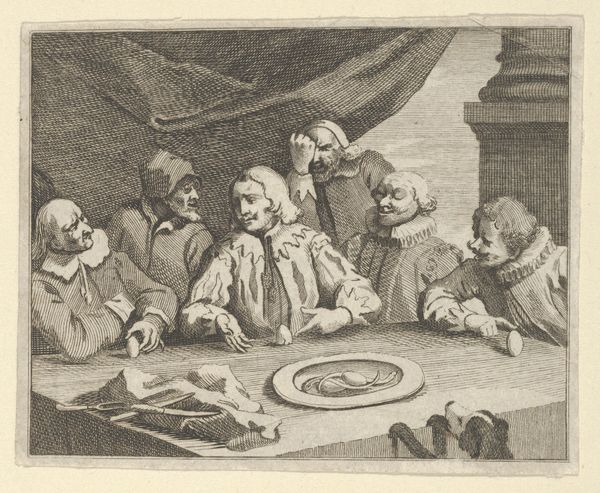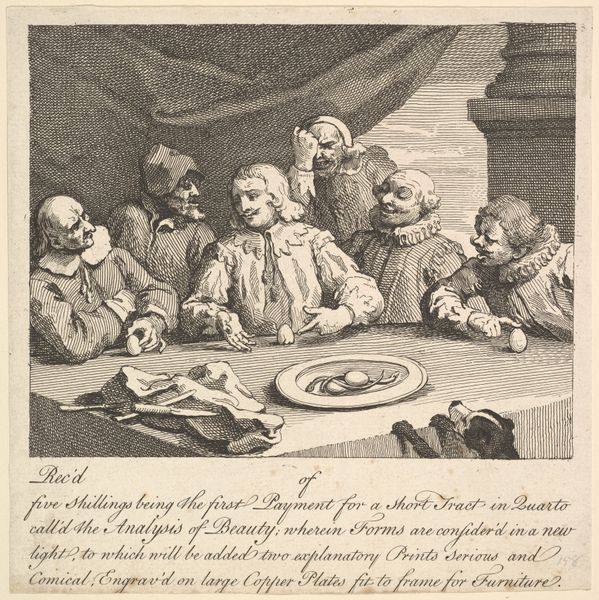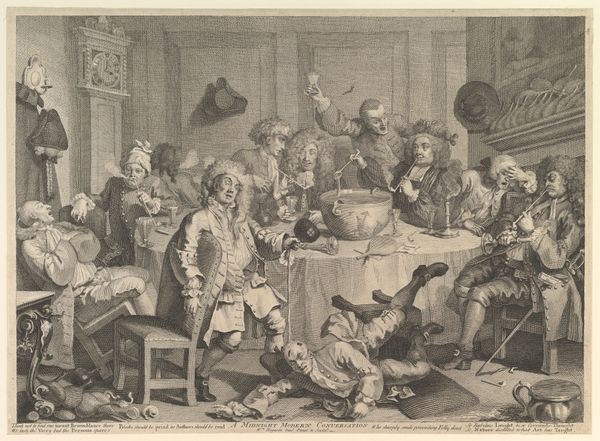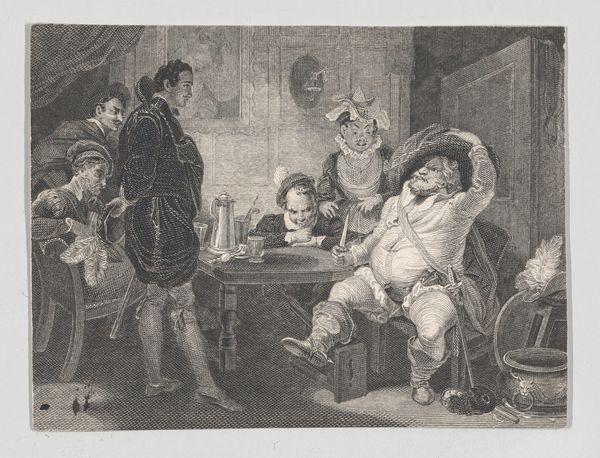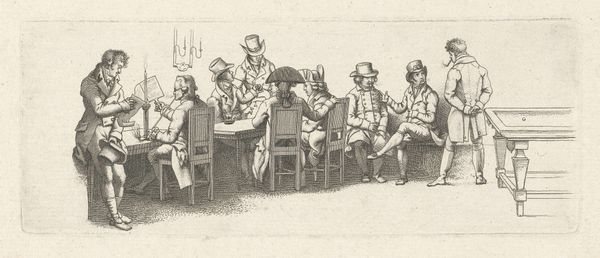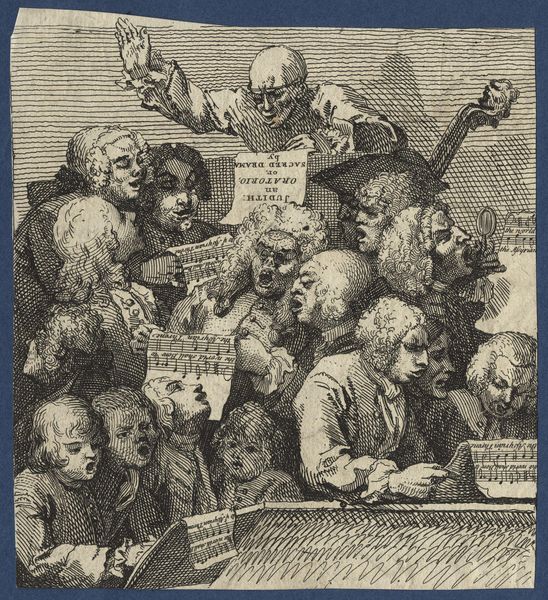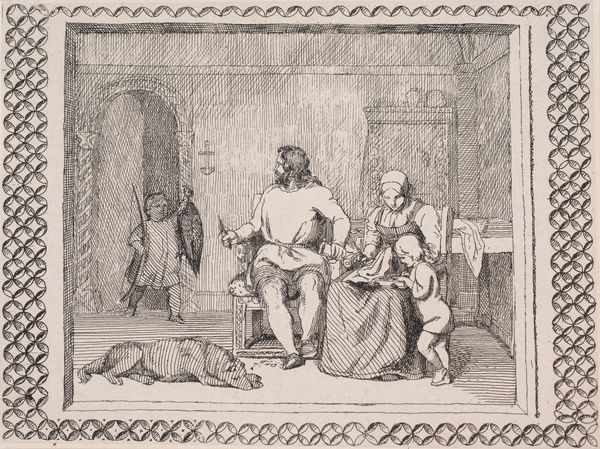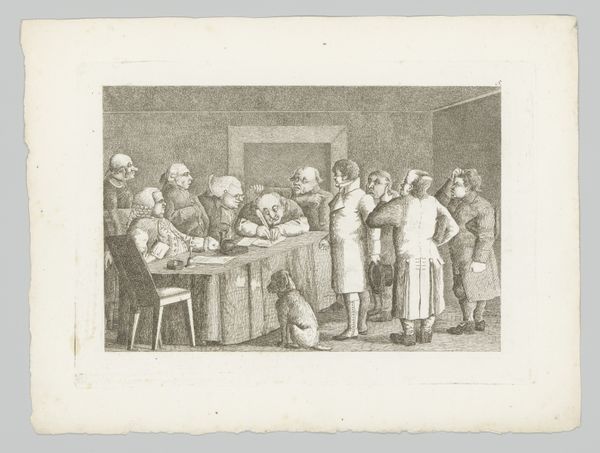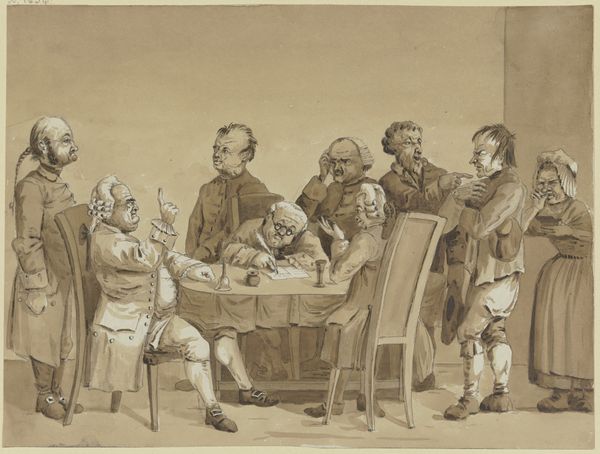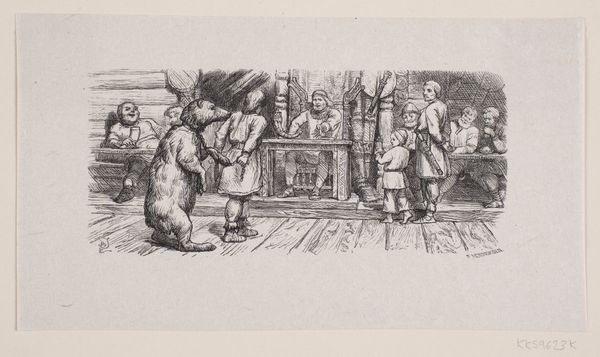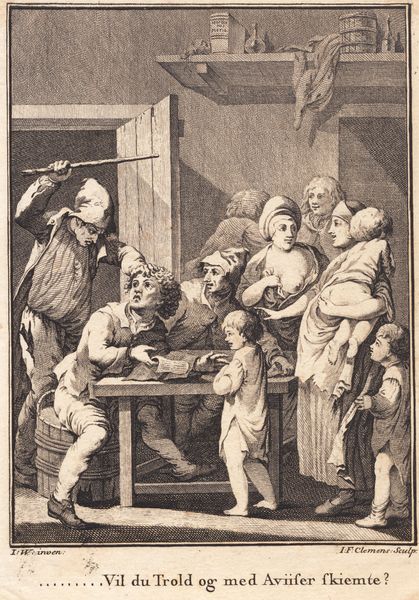
engraving
#
allegories
#
allegory
#
baroque
#
symbol
#
caricature
#
caricature
#
figuration
#
line
#
history-painting
#
engraving
Copyright: Public domain
Curator: William Hogarth's engraving, "Columbus Breaking the Egg," created in 1752, immediately strikes me as a satirical commentary on ingenuity versus perceived impossibility. What are your initial impressions? Editor: It's fascinating, almost repulsive! The contorted faces of the men, the stark, unflattering lighting… it suggests a discomfort with unconventional solutions. There's an undercurrent of established power being challenged, wouldn't you agree? Curator: Precisely! Hogarth uses the engraving process itself—a meticulous, labour-intensive method—to comment on societal rigidity. He's asking us to consider the social structures and expectations that confine our thinking, the labour that goes into both perpetuating and breaking free from them. Look at the line work itself: dense, controlled, yet ultimately yielding to the composition’s iconoclastic theme. Editor: It's clear he's critiquing a very specific kind of intellectual elitism and its impact on colonial ambitions. Columbus, for all his brutality, represents a kind of "outside the box" thinking that disrupted the established world order. How might this image have resonated with the political discourses around empire and exploitation in the mid-18th century? Curator: I see Hogarth slyly nodding at the expanding networks of trade and consumption linked to colonial ventures, by displaying in an ostensibly "high art" medium, a lowbrow tavern scene rife with crude humour, effectively decentering elite art from it's purely aristocratic patronage. The plate itself becomes a commodity, democratising a commentary usually limited to wealthier spheres. Editor: Right. There's also a definite visual language of "othering" at play here in how the figures react to the egg itself: a stark contrast, really. Some are disturbed, one is openly mocking the solution. How much did his understanding of class difference drive this critical eye? Curator: Deeply. Hogarth saw art as a social tool, something that needed to reach as many eyes and ears as possible. The "Columbus Egg" tale, by then well established, gave him perfect leverage to question entrenched norms regarding intellectual and physical work in the expanding capitalist system of Georgian England. Editor: The layers are just fascinating. This wasn't just an aesthetic exercise, it's an ideological challenge, pushing viewers to confront how privilege shapes their view of progress. Curator: Absolutely. And understanding that interplay, in how Hogarth manufactured his critique using material conditions around him, helps illuminate the continuing, messy dialogue about the social roles, for good and for bad, great innovation plays. Editor: A powerful reminder to look beyond the surface of any “simple solution”. Thank you.
Comments
No comments
Be the first to comment and join the conversation on the ultimate creative platform.
